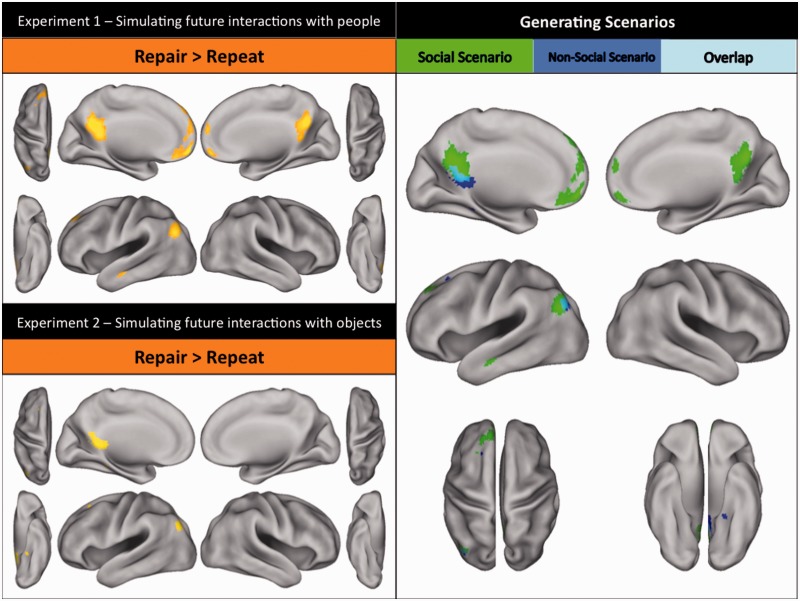Fig. 3.
Regions involved in constructing simulated representations of scenarios in Experiments 1 and 2 as identified by the contrast of (new person trials + new location trials) > repeat trials, i.e. trials requiring the generation of a new scenario against those that involved re-simulating a previous scenario. Notably, an identical pattern of results arose when repair trials (also requiring the generation of a new scenario) were contrasted against repeat trials. Top left panel: Regions involved in constructing simulated representations of social scenarios in Experiment 1 [activations include bilateral medial prefrontal, bilateral posterior cingulate, left temporal–parietal, and left middle temporal cortices; whole-brain corrected (FWE) at P < 0.05]. Bottom left panel: Regions involved in constructing simulated representations of non-social scenarios in Experiment 2 [activations include left frontal, left retrosplenial, left fusiform and left posterior parietal cortices; whole-brain corrected (FWE) at P < 0.05]. Right panel: A descriptive visualization of the anatomical overlap between regions involved in constructing social and non-social scenarios.

